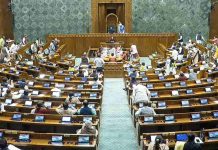When the National Commission of Farmers, chaired by Father of Green Revolution in India, Mankombu Sambasivan Swaminathan pointed out that something “very serious and terribly wrong is happening in the countryside,” it was clear that steps were needed to mitigate distress in the agriculture sector. Keeping in view various type of risks involved in agriculture, the government came out with an ambitious scheme called “Pradhan Mantri Fasal Bima Yojana” to provide insurance cover to farmers in case of a crop failure. Insurance companies overwhelmingly participated in the scheme. But instead of benefiting farmers, the scheme has benefited insurance companies.
 Tehelka Cover Story in this issue and a subsequent series would unravel the truth of PMFBY. In 2016-17, the difference between the premiums received and compensation paid to farmers was 6459.64 crores. In 2017-18, they paid over 2,000 crores less by way of claims and the margin of insurance companies went up to 9,335 crores. A thorough probe in this matter is necessary to find out if this profit from a social welfare scheme is legitimate. Also, there is a need to find out why more than 84 lakh farmers, which is around 15% of the total farmers insured in the first year of the scheme, withdrew themselves from the scheme in 2017-18. About 5.72 crores farmers enrolled themselves for the crop insurance scheme in 2016-17 but the number came down to 4.87 crores in 2017-18.
Tehelka Cover Story in this issue and a subsequent series would unravel the truth of PMFBY. In 2016-17, the difference between the premiums received and compensation paid to farmers was 6459.64 crores. In 2017-18, they paid over 2,000 crores less by way of claims and the margin of insurance companies went up to 9,335 crores. A thorough probe in this matter is necessary to find out if this profit from a social welfare scheme is legitimate. Also, there is a need to find out why more than 84 lakh farmers, which is around 15% of the total farmers insured in the first year of the scheme, withdrew themselves from the scheme in 2017-18. About 5.72 crores farmers enrolled themselves for the crop insurance scheme in 2016-17 but the number came down to 4.87 crores in 2017-18.
Among the States, the maximum number of 31.25 lakh farmers withdrew from the scheme in Rajasthan, 19.46 lakhs from Maharashtra, 14.69 lakhs from Uttar Pradesh, 11.29 lakhs from Karnataka and 2.90 lakhs from Madhya Pradesh. That is another point of concern. Had the scheme be beneficial to farmers, no farmer would quit it. Are the methods to assess crop loss not farmer-friendly or claims settlement procedure cumbersome and time-consuming? Has the scheme been linked with the ‘Jan Dhan Yojana’ to make it truly inclusive?
There is a need to provide relief to farmers immediately for a crop failure by linking these to the process of direct benefit transfers. In recent times, the country is experiencing unseasonal rains, dust, and thunderstorms, causing extensive damage to crops at the time of sowing, harvesting, and marketing. With freak weather becoming more imminent, measures to provide protection to farmers against these risks is need of the hour. Experts suggest the use of information and communication tools to help farmers regain faith in crop insurance schemes and make them more efficient and transparent. After all mitigating risk in the agriculture sector has a direct implication for productivity in the farm sector and the welfare of farmers.













